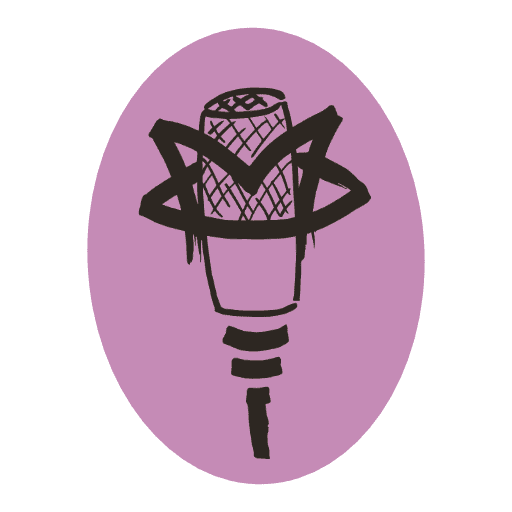This is a long one folks.
My colleagues and I love to play a game where one of us asks a question and the rest of us jump up and down and tells our version of the truth. I don’t think any of us are wrong, but many of us do believe we are the only ones right.
It’s our way, for good and for ill. Leave us be.
One of the most talked about/heated arguments in my field is the concept of Head Voice and Chest Voice, and “The Mix”, and what that means for the classical singer and the contemporary singer, and all the other singers.
In one recent conversation online, there were over 175 comments, offering terminology for the concept of head voice and chest voice.
Let’s Explore the Terminology of Head Voice and Chest Voice
Here’s a list from our conversation:
- Mode 1/Mode 2
- Low/Loft
- Upper and lower registers
- Chest and Head “resonance”
- Falsetto and Modal
- Little girl/Macho Man
- True and False
- Classical/ Belting
- Heavy/Light Mechanism
- High Light/Warm Strong
- voce di petto, voce di finta, voce di testa (Chest Voice, voice of pretend, voice of head)
- Speaking voice/Upper voice
- Blue/Red
- Tweet/Honk
- Whoop/Yell
- M0, m1, m2, m3
- Magic

While the scientific terms are relatively new, because EGGs and videostroboscopies are relatively new, in the long history of vocal pedagogy, the concept of arguing about it is not, and for good reason.
Harnessing the Complexity of Singing: Understanding the Physiology and Emotion Behind Vocal Techniques
Let’s go on a bunny trail for a sec…
The information we now have about the function of the tiny little larynx and the resonators tells us a great deal about which muscles are doing what/when/where/how. There are tests and equipment that give us data to make educated guesses about what happens in the anatomy. The physiology of such things are the topic of many books and articles that I am happy to tell you about, if you don’t know about them yet. I’ll save specifics for another post.
Singing is simple
Physical structures doing physical things and functioning in ways that when they do the singing happens. It’s what the body parts do at their most basic and instinctual level, without thought or intention. Anyone can “make” singing sounds happen.
Singing is complex
There are ways to access and inform the fine motor skills needed to guide along those functions and pieces of anatomy to get healthy, and desired, and appropriate sounds, with resonance and consistency.
In the end
The voices audiences are affected by most are the ones that make them feel; the ones that do something to the emotion centers of our brain. All their richness and emotion and power and grit and glory~ those are the sounds that for each listener determines a “good voice”. And it’s a tad bit subjective. Yes, sarcasm.
We voice teachers get people to be able to sing their emotions as truthfully, powerfully, honestly, and healthily as possible. For some genres, the way it sounds is imperative. For others, it’s negotiable.
To make the connection between the story they are telling and the sounds coming out of their face can be tricky. We often believe we are communicating, but aren’t. That’s where the teachers and coaches come in…. to give tools to the singer to *actually* express themselves. (As Marchesi said, aesthetic and technique.)
Sometimes that tool means a flutey sound produced by a more simple and pure chopping of air with little to no vertical fold contact, or what can be called “head voice”. Sometimes that tool is shorter, thicker folds that result in more, and stronger high harmonics, or what can be called “chest voice”.
Back to the point of head and chest terminology:
I still say head and chest and mix,
even though voice science shows us that it’s not “true”:
To begin a conversation.
The demographic I work with knows the terms “chest”, “head”, and sometimes, “mix” when they walk in the door. These terms are ubiquitous. They learn them from the producers, choral conductors, high school theater directors, and other voice teachers they work with. Shoot, they learn it from the internet!
They may not be able to access these sounds right away, but they know it when they hear it. They sometimes feel competent in both. Sometimes they believe they can only produce or access one of those types of sounds.
Oft times, singers do not start in a place of body awareness where they recognize that they are feeling resonance in the hard palate, nasal passages, high chest area, throat, ears, wherever, all the time. They usually just call it where they feel it most, and tend to ignore the other sensations until asked to observe them.
Those producers/choral conductors/high school theater directors I mentioned earlier are not going to use the terms vibrational mode one and vibrational mode two. They are not going to ask my students to “put some more cricothryroid dominant, edge of fold contact and oscillation in the tone”. I’d be floored if they said, “you know, I really need a more high-larynx narrowed aryepiglottal sphincter shape in that last note.” And you know what else they don’t talk about? Chiaroscuro. (Sad, I know, I know.)
What is asked for is head, chest, mix, belt, legit, and lots of other not-quite-right terms we’ve been using since the beginning of singing-time. (I know because I’ve seen the drawings in the caves.) They want a sound that makes them relate to some emotion, and they have the ear to tell them what those sounds are perceived as.
Now before you get all mad, and throw me in the lions’ den, hear me out.
Ultimately, we want our singing students to:
- Know their personal instrument, and the vocal instrument in general.
- Sing/perform at the next level of their development, whether that’s getting into Julliard, recording their next project, or singing in front of an audience for the first time.
- Pay their bills doing what they love. For the avocational singer, maybe they are paying emotional bills?
In order to achieve the above, they:
- Must speak the industry(ies?!) language, and figure out what is being asked of them.
- Know concepts that may include terms and anatomy so they can deliver what is being asked of them.
- Be able to communicate quickly and efficiently with a wide range of other singers/musicians.
For me, (since it’s my blog and all), not trying to reinvent the wheel helps my students achieve.
It helps them when I explain the wheel, and how it works, and the other terms that are out there that refer to the wheel.
I may show diagrams, and play with my homemade playdough larynx, and hand out glossary sheets.
Then I still use the terms that they hear every dang day when working.
Is this ideal? Not sure yet.
Hopefully I’m planting seeds for the next generation to talk in a more sophisticated way about the voice.
But I like when singers can cut to the chase of a concept that’s the size of an iceberg.
If it takes calling it head and chest and mix, so be it.







Yes, I love this! Those three terms (head/chest/mix) are problematic in some ways, but they are what students read in MT audition listings! We need to teach our students to speak that lingo, even if these aren’t our favorite terms.
Thank you Catherine!
We’ve got to do what we can to educate our students to both what’s happening AND what’s being asked for, yeah? The listings are what tell our clients how to get jobs. Isn’t that the point? Haha!!
I love the way you write and refer to the many complex issues of singing and teaching. I love the humor 😉
Thank you very much, Stav! I tried to write like other people for a long time. Needless to say, it’s always best when we are just us… for our students and for ourselves, right?
By the way, you are amazing and I feel famous that you commented on my blog <3 I'd love to talk with you more!
Bless you and thank you! There are already enough things to teach- a physician level study in anatomy falls to the wayside when you need to work lines and spaces!
RIGHT?! Often times the dialogue around pedagogy focuses on a demographic that is so distance than who we are actually teaching… There is plenty of time to learn, from plenty of people. We can solidify concepts and introduce them… but dying on the hill of “science speak” defeats the purpose.